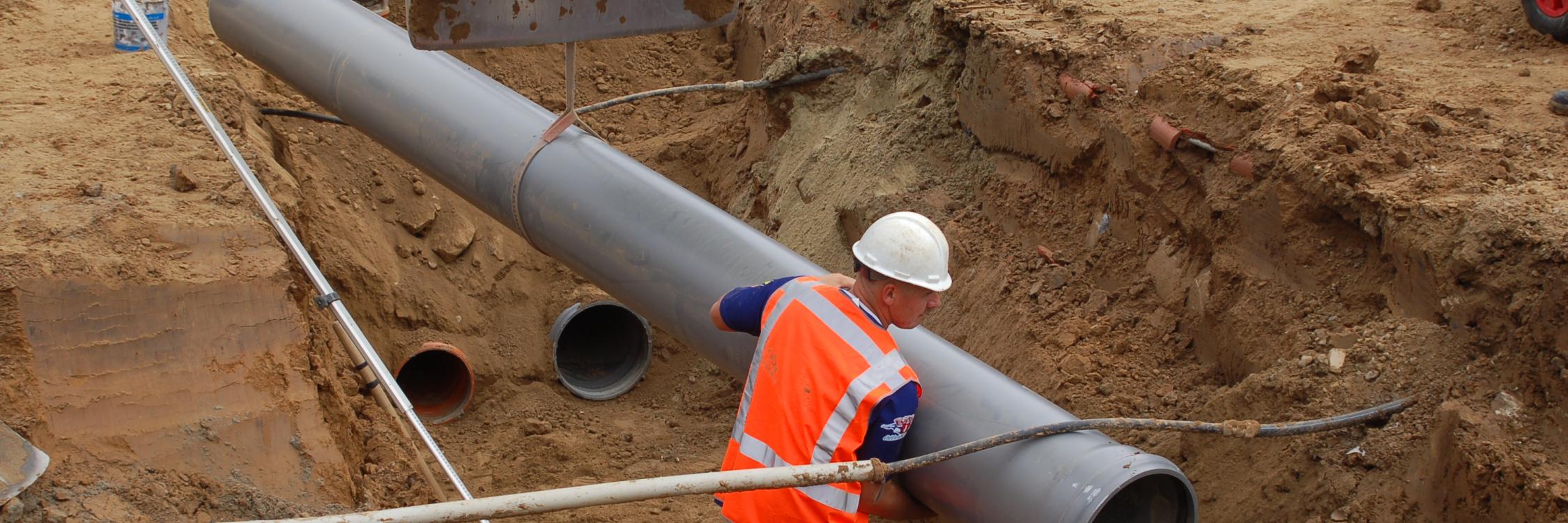
Traditional choice of materials delays sewerage expansion
Opting for plastic means more sewer pipes for the same budget
According to data released by the Vlaamse Milieumaatschappij (Flemish Environment Agency), one in eight houses in Flanders continues to discharge its wastewater into surface waters instead of the sewerage system. Expanding the sewerage network is the only way to reduce this statistic. However, sewerage network managers continue to opt for traditional installation materials, despite evidence to the contrary that these materials are more expensive than plastic pipes. If plastic were used, a larger number of waste pipes could be installed with the same budget.
The high costs involved in installing waste pipes stands in the way of the rapid expansion of the sewerage network. From now until 2027, an additional investment totaling EUR 2.7 billion is needed in order to achieve the water quality that corresponds to European standards. The choice of the materials used, i.e. rigid materials such as concrete and vitrified clay or plastic, has a considerable effect on the total costs of sewerage projects.
Choice of materials is traditional, not rational
“The choice of materials is often traditional instead of rational," explains Ludo Secretin, Commercial Director at pipe manufacturing company DYKA. “Sewerage managers persistently opt for rigid materials. However, research has shown that this significantly cuts into the available budgets. For example, compared to plastic sewer pipe installations, the costs of materials and installation of a vitrified clay sewer line are up to 50% higher," he confirmed. One of the reasons that the former is less expensive is that the use of plastic pipes speeds up the installation works by 30% compared to rigid pipework. That is why DYKA encourages sewerage managers to make a rational choice rather than a traditional one.
Reliability
In addition, plastic sewer pipes have even proven to be more reliable. “Plastic piping is 85% less susceptible to defects. The savings on the repairs budget could be used for installing new sewer pipes," explained Ludo Secretin. And yet only 10% of Flemish sewer pipes are PVC pipes. “Other countries score much higher in that respect. If we want to have clear water by 2027, sewerage managers should seriously reconsider their choice of materials – ideally, the sooner, the better," he confirmed.